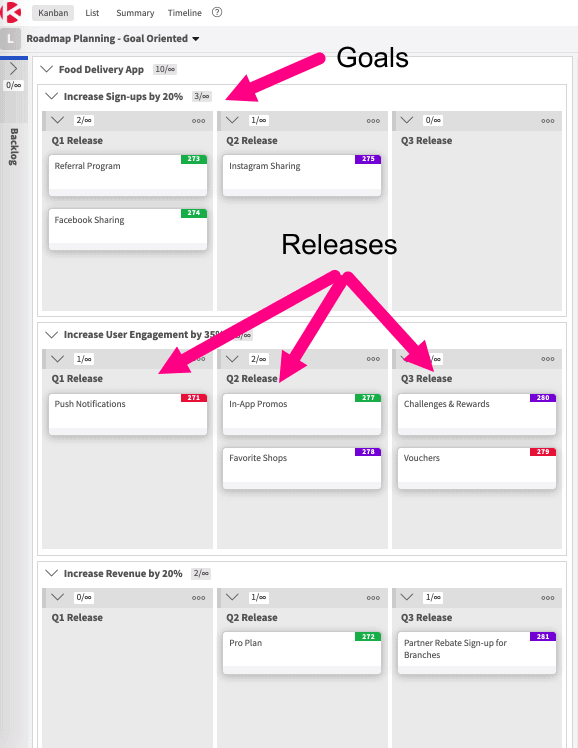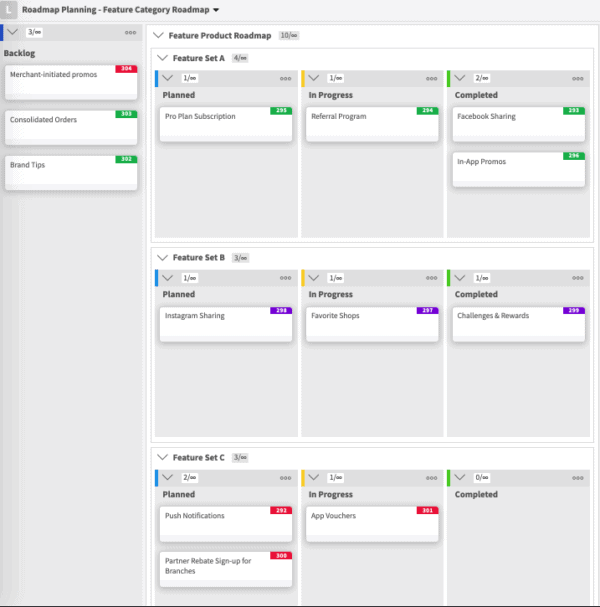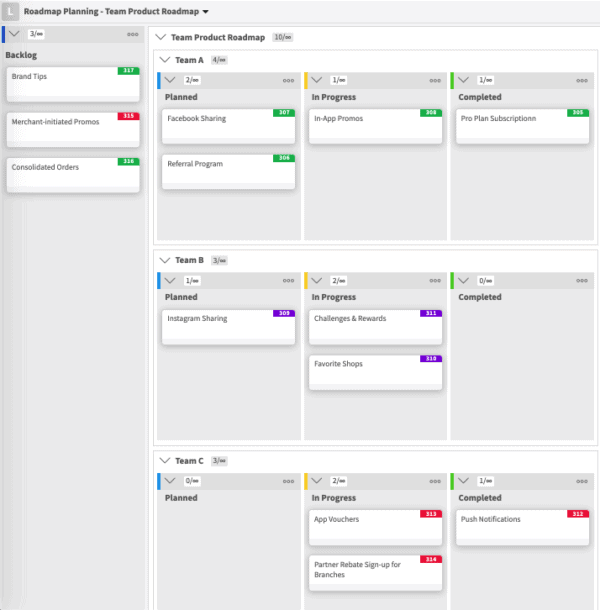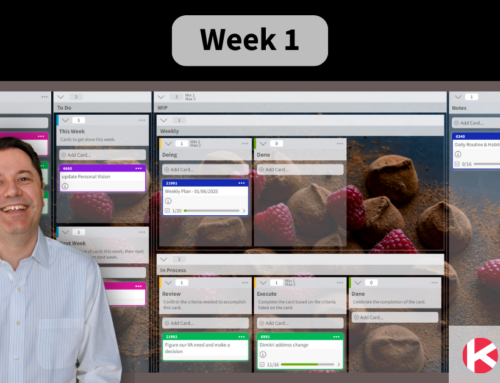
Product roadmaps provide teams with the direction they need to implement the company’s vision and goals. But not all product roadmaps are created equal. Teams need an Agile product roadmap that can be flexible with the changing demands of consumers while hitting company targets and objectives. Product managers often find it challenging to balance the two. But with the right strategy and a clear vision, an Agile roadmap will be your best tool to ensure product development is charting the right course.
Let’s explore what makes an Agile roadmap and how you and your team can make one.
What is an Agile Roadmap?
A product roadmap is a tool for communicating how a product evolves through time. It is a way to visualize, plan, and execute a product’s growth. To illustrate what a product roadmap does, let’s take Instagram as an example. I don’t know about you, but when I started using Instagram, all I could do was post one photo at a time.
But when you look at the latest features of Instagram, you could now add up to 10 photos in one post. You could do Stories, have a Live IGTV broadcast, and post videos. What the application was five years ago is miles away from what it is today. That’s because the product evolved. Every time there is an update for the platform, there are new features included in it. There could also be new designs and even fixes to some known issues. A product roadmap outlines these features and when they will be released. And I’m pretty sure the folks at Facebook have a roadmap for all of their products and not just for Instagram.
But what makes a product roadmap Agile?
Many teams, especially in the software development industry, aspire to be Agile in all their activities. It may seem counterintuitive to have a product roadmap and be Agile. Many people think that Agile is only about always being flexible to changing needs and requirements. While there is truth to this to some extent, planning is not counterintuitive to Agile. A lot of high performing Agile teams recognize the importance of planning.
Effective Agile roadmaps are nimble to changing needs and demands of the market and the business. Effective Agile roadmaps provide clarity so that the team can easily see the connection of their planned features to the overall product vision. An Agile roadmap gives visibility on the present and near-term priorities. This visibility allows business leaders to know where the product is now and where it’s headed. It helps them assess whether the course of the product is in line with business and market expectations.
Tips for an Effective Agile Roadmap Planning
To make the most out of your Agile roadmap planning efforts, we’ve rounded up five of the most important tips to come up with a robust product roadmap.
Have a Clear Vision
No Agile roadmap will be effective without a clear vision. The product roadmap is only the visual representation of your vision. Without clarity on what you envision your product to be and what it should solve, your Agile roadmap will be incoherent. This means you may create a non-viable product or stuff it with features that aren’t what your target market is looking for. Before you go into any Agile roadmap planning activity, make sure you have a product visioning activity first. Having a clear vision in mind will also help you make targeted goals and objectives for each product milestone you plan on your Agile roadmap.
Focus on Outcomes and Goals
One of the mistakes I see teams make is that they focus on identifying features that go into the product first. It can lead you to miss business targets and producing a non-viable product. Your team can avoid this loophole if you start with your goals before identifying the features that go into your roadmap. Using a goal-oriented approach when creating your Agile roadmap will ensure that you are on items that roll up towards your bigger goals and overall product vision.
Align with Your Product Team and Stakeholders
You should get your product team and stakeholders onboard your Agile roadmap plan. Getting their buy-in is crucial to the success of implementing the plan. Everyone involved in creating the product must understand why we’re building things the way we are. They must understand how each feature supports your desired business outcomes, goals, and product vision. You can get their suggestions, ideas, and inputs on how you can work your way through the fruition of your Agile roadmap plan. This shared understanding and the act of soliciting their inputs will also help secure their buy-in.
Don’t be tempted to add features to please your stakeholders and teams. Learn to say no if the suggestion does not align with your product vision and goals. Your stakeholders should also understand that you’re working on a set of outcomes and goals. So share the product vision and goals with them.
Define Measures of Success
We can determine the success of our Agile roadmap efforts if we have metrics and KPIs. These are in line with the goals and outcomes that you have defined. If your goal is to increase revenue, then specify by how much that increase should be. If your goal is to increase user engagement, then indicate that too. We will better know if we are working right if we have a metric that can confirm this. Apart from that, your team will also be more motivated to think of feature items that have a high chance of contributing to those measurable goals.
Regularly Review and Adapt Your Product Roadmap
To keep your Agile roadmap in tip-top shape, regularly review it and see if it’s still in line with market needs. Change is inevitable in a highly Agile environment such as software development. So it’s very important to review your Agile roadmap to account for the impact of these changing requirements. A timely review would be monthly to quarterly depending on how volatile and dynamic your market or industry is. Having a change management process will also help support your agility efforts.
Agile Product Roadmap Templates and Examples
Goal-oriented Product Roadmap
In this Agile roadmap template, we see that each goal is assigned a swimlane. This allows product managers to group feature items and tasks according to the goal they fulfill or support. In terms of development timelines, we use vertical containers within the goal swimlanes to specify which features go into which release. This helps you and your team see what needs to be prioritized now and what is in the pipeline in the near term. This can also help make your stakeholders easily know when features are most likely to get worked on.
You can also add a separate column for your metrics and KPIs in your goal-oriented product roadmap board. This will only be for documentation purposes and will be assigned a “None” column state.

Now, Next, Later Product Roadmap
This Agile roadmap template is one of the most straightforward but can also serve as a baseline template for other product roadmaps. It shows what features go into your product roadmap and when you are releasing them. It’s recommended to indicate the release name or version in your column titles as you will most likely have them. You can opt to display the release dates too.
A tip for using this Agile roadmap template is to use different colored labels to group your features as can be shown in our example.

Feature Category Product Roadmap
Here is an example of an Agile roadmap template that builds on the “Now, Next, Later” template. We use swimlanes to group the cards by feature set. Within those swimlanes, we use vertical containers to keep track of what’s left to be done, in progress, and completed.

Multi-team Product Roadmap
If you have multiple teams working on your product, you must keep track of who gets to work on what. Using this Agile roadmap template, you can get an at-a-glance view of what’s on each team’s plate. It will be a good tool for team discussions should there be integrations or dependencies between teams.

How to Do Agile Roadmap Planning with Kanban Zone
Kanban Zone has a rich interface that allows you to design your Agile roadmaps depending on your focus. Whether it’s releases, milestones, goals, or teams, you can design your Kanban boards to fit the focal point of your roadmap plan. As these Kanban boards are online, everyone on your team can easily access them. You can assign view privileges for your stakeholders if you need to. You can leverage Kanban to improve your agility in product management.
Use these Agile roadmap templates to ensure that your teams are working towards the right business goals. As you gain experience in Agile roadmap planning, you’ll gradually see how Agile and proper planning go hand-in-hand to create meaningful and successful products.
Table Of Contents
Discover many more posts…







